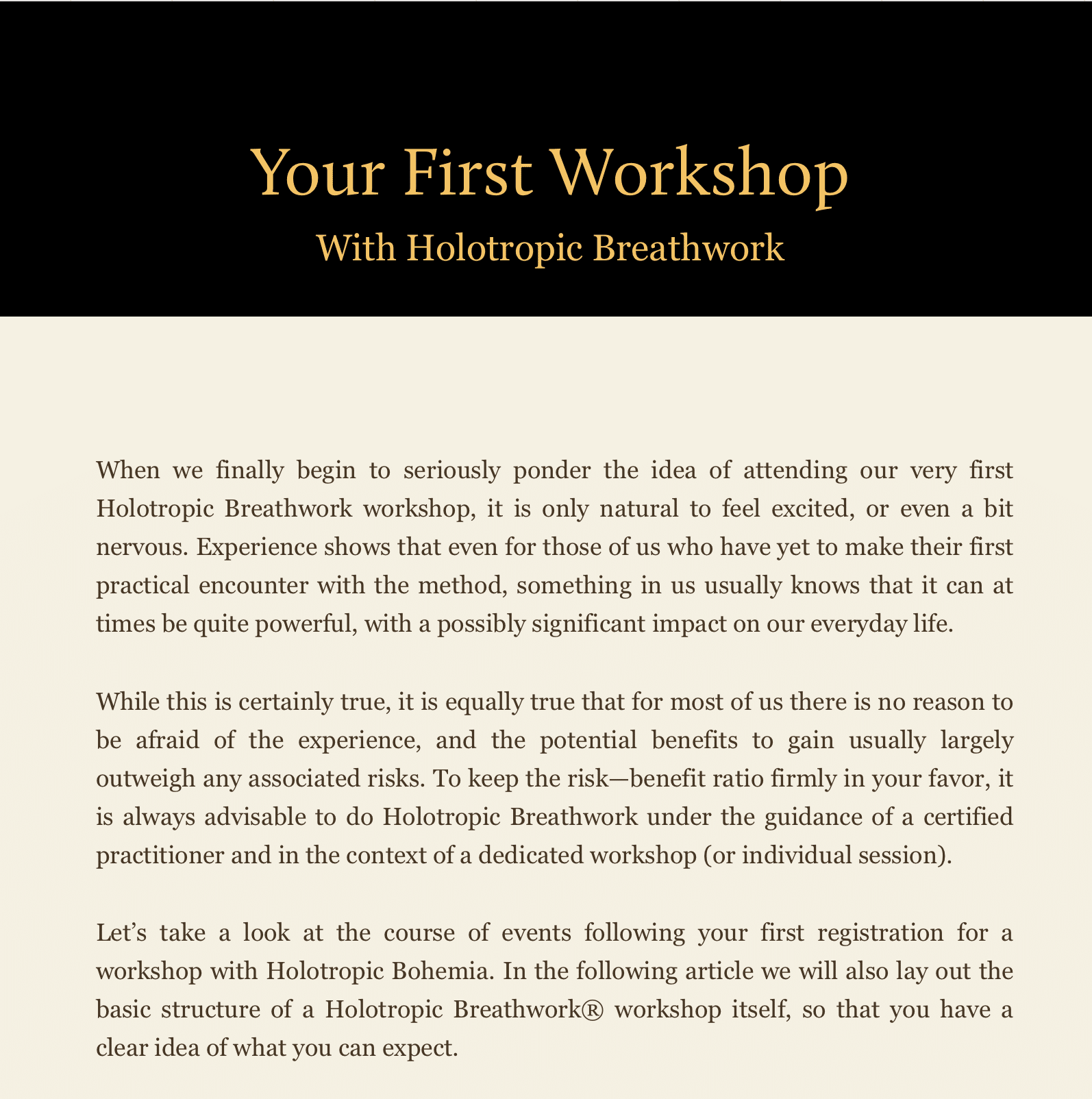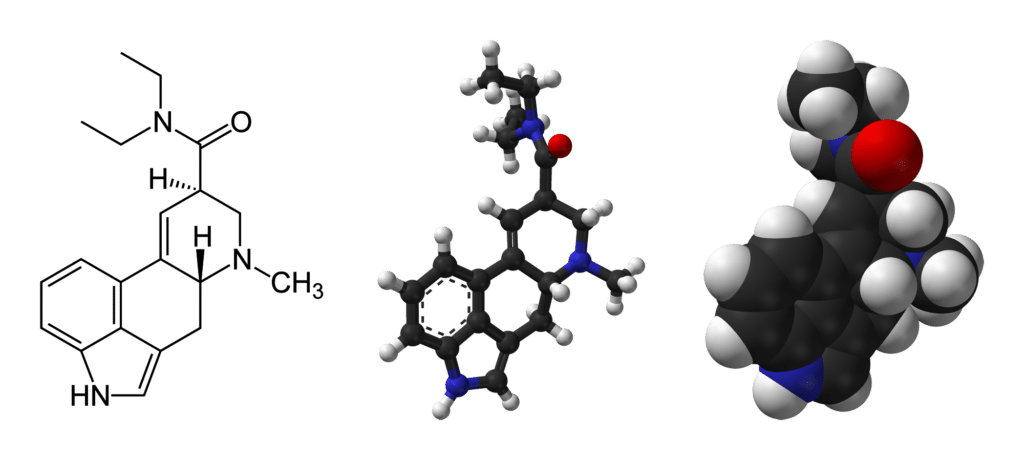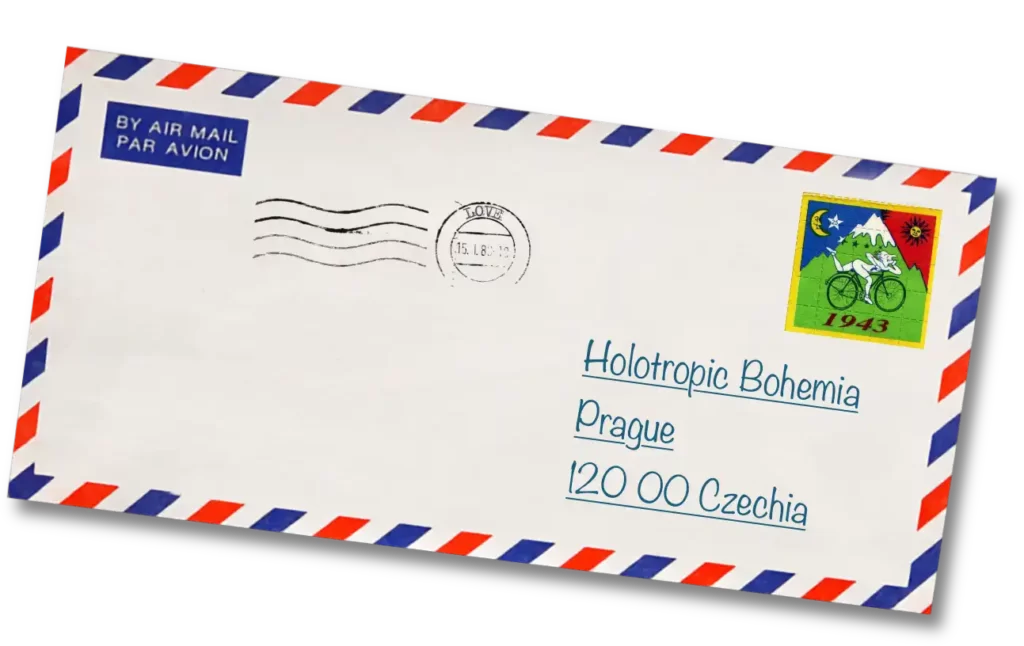
Welcome
to Holotropic Bohemia
Holotropic Bohemia is a Prague-based undertaking started in 2019 by musician and HB practitioner Roman Petrov. We are professionals running experiential workshops with the Holotropic Breathwork method in the Czech Republic, EU. We follow the methodology taught by the Grof Transpersonal Training organization (GTT), founded in 1989 by Stanislav and Christina Grof, the originators of the method. We comply with the GTT Ethical Agreements and cooperate with GTT-certified facilitators who are mindful of their continuous professional, ethical, and spiritual self-improvement. We are members of the European Association for Holotropic Breathwork.

Holotropic Association Europe

What is Holotropic Breathwork?
Holotropic Breathwork is a powerful experiential approach to self-exploration and spiritual empowerment that relies on our innate wisdom and its capacity to move us toward positive transformation and wholeness. Its theoretical framework integrates insights from modern consciousness research, anthropology, psychology, psychiatry, Eastern spiritual systems, and mystical traditions of the world. The term “holotropic” means “moving toward wholeness” (from the Greek holos — whole, and trepein — move toward).
The method was developed in the 1970s and 1980s by the Czech-American psychiatrist Stanislav Grof and his wife Christina, at the Esalen Institute in Big Sur, California. In the course of its almost 50-year-long history, tens of thousands of people have used it to find healing and spiritual fulfillment.


“holo - tropic”
What can you achieve
through Holotropic Breathwork?
1.
First, HB can serve as a powerful tool for self-exploration and spiritual realization. Many have used it as a life-long spiritual practice. It has the power to transform our lives into an adventurous journey of self-discovery and establish much-needed direct contact with the spiritual dimension of ourselves and the world around us. If you feel that you could live your life more purposefully and with deeper meaning, then Holotropic Breathwork might be just what you are looking for.
2.
Second, it can help us overcome and heal a broad spectrum of psychological difficulties. For example, relationship problems, trust issues, anxiety, depression, panic attacks, post-traumatic stress disorder, and eating disorders, to name just a few. Also, some psychogenic (psychosomatic) forms of conditions like asthma, psoriasis, chronic fatigue, or other stress-related problems may be alleviated or healed. A certified HB practitioner will help you determine whether the method would be suitable for you and whether it may help you achieve your goals.
Is HB the right technique for you?
- I am experiencing a sense of routineness and a feeling that my life lacks excitement and meaning
- I am seeking a more experiential approach to healing, one that goes beyond talk therapy
- I want to understand the emotional roots of a persistent physical/psychosomatic condition
- I am experiencing a major life crisis and seeking deep wisdom and insights
- I want to release unresolved emotional issues from the past
- I am yearning for deeper insight into the nature of reality and advancement on my spiritual path
- I want to find an authentic creative impulse and nurture artistic inspiration
- I want to facilitate the integration of a difficult psychedelic session
Holotropic Breathwork might benefit you if you identify with one or several of the following statements
What Services Do We Offer?
Check out the Events section for upcoming event dates and detailed information about the different workshop designs.
You can choose from several types of events:
- non-residential, monthly workshops
- residential, extended double-breathwork workshops
- residential, summer weekend workshops
Some of our workshops are non-residential, time-compact events, others are several-day retreats, located outside the city. They also vary in the number of participants and facilitators — the smallest groups usually have around ten participants, the larger ones thirty or even more.
Your First Workshop Experience
If you feel hesitant or are unsure whether the group setting of the workshops would be your cup of tea, then you should know that you are not alone in this. It is quite common to feel this way in the beginning, and many of us have been there too! You’re always welcome to call us or drop us an email. Together we’ll figure out the best way we can support you, wherever you may be on your own chosen path.
+420 777 148 087
About This Website
This website is a gateway to the adventurous world of self-discovery through the method of Holotropic Breathwork and the associated community of people. It offers accurate and detailed information about the technique and its theory, as well as direct access to real-world HB events. The website is organized into three main sections: People, Events, and Reading. Explore it to find out who is involved, learn about Holotropic Breathwork and non-ordinary states of mind, or join one of our HB events.
We hope you’ll find it enlightening!









